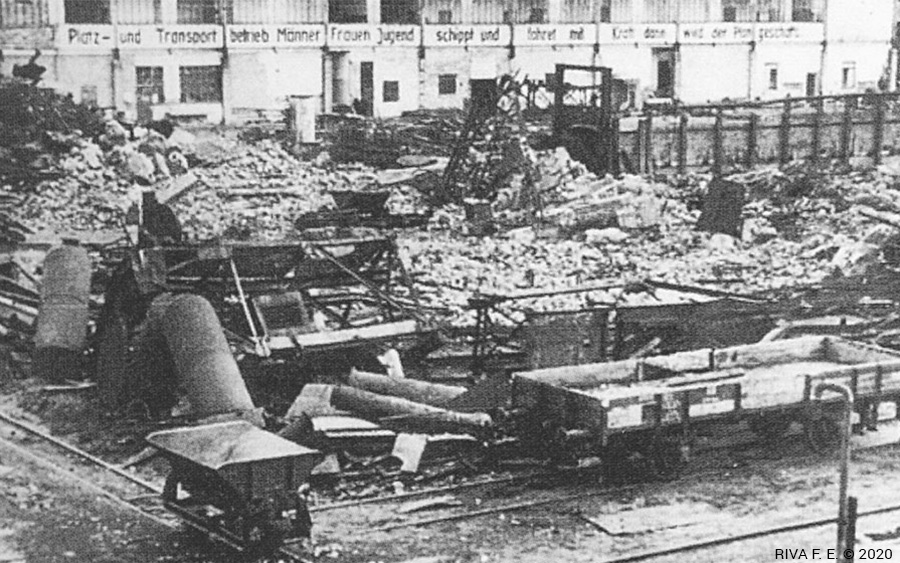
The Hennigsdorfer Elektrostahlwerke GmbH (H.E.S.) is a successful company rich in tradition, founded in 1917 by AEG, the leading group in the German electrical industry at the time, under the name AEG Hennigsdorf Nord, not far from the Berlin’s North-West border. At the end of the 1920s the plant was bought by Friedrich Flick, who managed it until the end of World War II. After the GDR, the Riva Group took over the industrial site in May 1992 from the Treuhandanstalt (state-owned privatization agency) as a result of a public tender. The Riva Group invested about 280 million euro in a comprehensive modernization effort aimed at increasing the production and extending the product range (quality steel). A substantial part of the investments was dedicated to the environmental protection.
Currently the plant it is equipped with two EAF-furnaces in dog-houses, ladle furnaces and continuous casters. A new dedusting plant was installed (including closed circuits for direct and indirect cooling water), that absorbs the primary and secondary dust from the fumes through a dry filter. The product range comprises billets from the continuous caster, reinforcement steel and cold processed steel (drawn, peeled, ground), mainly intended for the automotive industry and its suppliers. H.E.S. implements an integrated management system (quality, environment, energy, sustainability, work safety) and is provided with the newest European and international system - and product certificates.

Under the direction of AEG Hennigsdorf Nord, a steel mill was built up in 1917, with two EAF furnaces (5 and 10 ton) and one 20 ton Siemens-Martin furnace. Moreover, a foundry and a wheel production plant were set up. In 1921 Stahl- und Walzwerk Hennigsdorf (a joint venture of AEG, Linke-Hoffmann-Werke AG Breslau and Lauchhammer AG Riesa) took over the industrial site. The new management optimized the production capacity and installed rolling mills for flat products. The Hennigsdorf site was then taken over by Mitteldeutsche Stahlwerke AG (owner Friedrich Flick) in 1926. After World War II, in October 1945, Friedrich Flick was expropriated. One year later the main plants of the Hennigsdorf site were dismounted and shipped to the Soviet Union as reparation.

The new steel mill was based on the Siemens-Martin technology, while the rolling mill switched from flat products to long products. In 1948 Stahl - und Walzwerk Hennigsdorf started production again as state-owned company. About 20 years later, in 1969, the company became a member of the Qualitäts- und Edelstahl-Kombinat, to which the Brandenburg plant was belonging too. For ten years Hennigsdorf was the chief company of this Kombinat. In the Seventies the works were widely modernized : a new electrical steel mill with continuous casters was built, and a continuous rolling mill for the production of reinforcement steel in bars and quality steel in coils was set up.

On the 1st of May 1990 the industrial site was transferred to the Treuhandanstalt (state-owned privatization agency). The areas of the site which were not competitive anymore, like the Siemens-Martin steel mill and the foundry, were given up, while the electrical steel mill was modernized. On the 1st of May 1992 the works were taken over by H.E.S. Hennigsdorfer Elektrostahlwerke GmbH, the company the Riva Group had established for this purpose.

The motorway A111 is just 5 km away. H.E.S. has its own rail connection and two ports on its premises, on the channel Oder-Havel-Kanal, having thereby connection to the overseas port of Stettin. The works cover an area of about 1,7 km², with three big production units (electrical steel mill, rolling mill, and cold processing), various administrative buildings, and the internal dump site “Pinnow”. The built surface totals about 210.000 m² , and the internal road and rail net stretches over a length of about 13,8 km and 41 km.
The works is specialized in the production of reinforcement steel, round steel (case hardening steel, tempered steel, carbon steel) and cold processed steel (drawn, peeled, ground). The rolled products are produced from square billets, which are melted and cast in the steel mill. H.E.S. sells its products to customers in Germany, in the EU (Netherlands, Poland, Belgium, France, Spain, Finland, Sweden), in other European countries (Switzerland, Norway) and overseas (USA, Central America) and Africa (Algeria, Nigeria, South Africa). The scrap is supplied to the plant via truck, rail and barges. The barges are unloaded in the company port at the Oder-Havel Kanal.
The steel mill is equipped with two EAF-furnaces with dog-house, ladle furnaces and continuous casters. The continuous rolling mill has a walking beam furnace, a blooming train, an intermediate train and two finishing trains. Automatic binding machines are also part of the equipment. The finished bundle is either stocked or loaded on truck or wagon. In the further processing and heat treatment departments peeling, drawing, and grinding machines and heat treatment plants are located. Heat treatments comprise annealing, stress-free annealing, tempering, normalization etc. The machines are equipped with non-destructive testing devices for surface and internal defects. Product tests to guarantee compliance to the requested quality requirements take place in the central laboratory, which is equipped with spectrometers for the chemical analysis and with devices for metallographic and mechanic tests. Since the privatization, the modernization plan was enacted and pursued according to the same principles, by enlarging the production plants, enhancing environmental protection, improving the working conditions and further developing products quality.